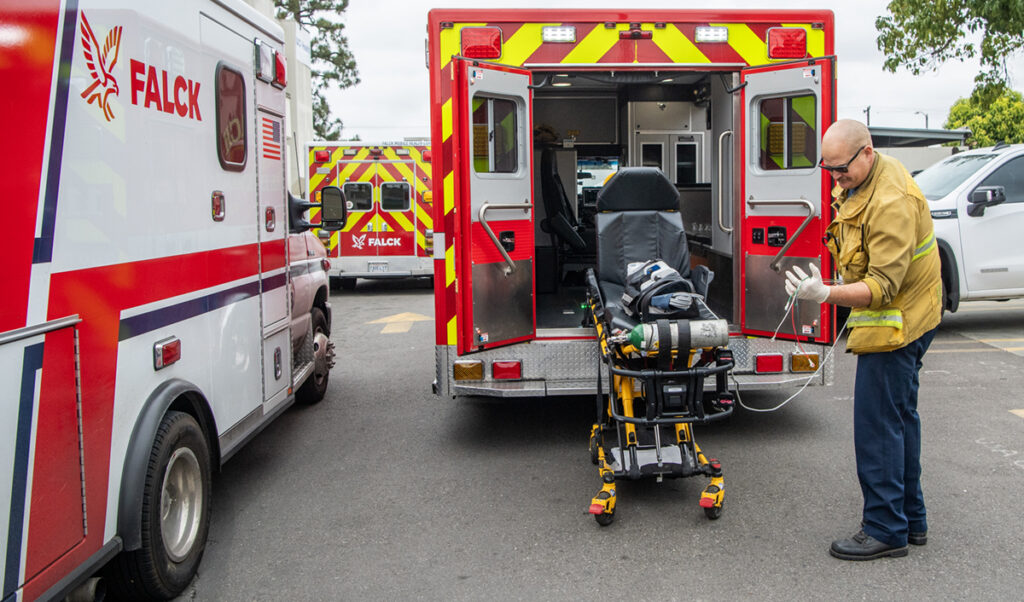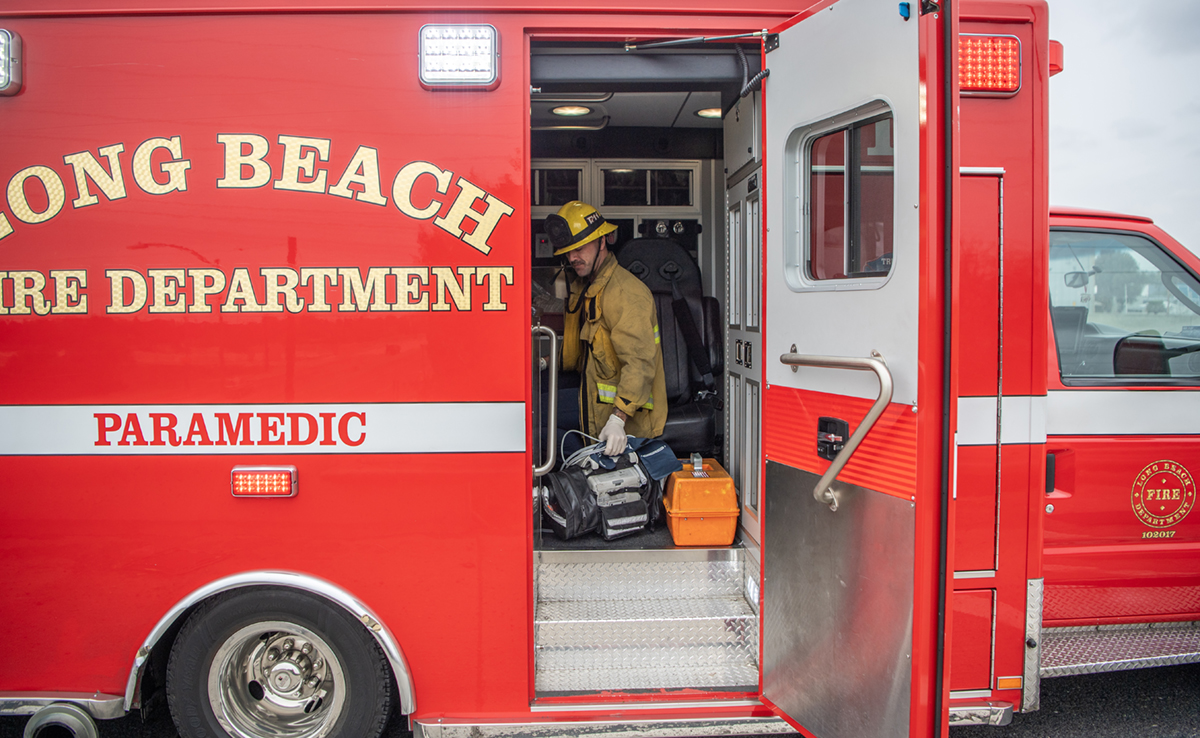For the first time in nearly 40 years, Long Beach on Tuesday approved a new, around-the-clock ambulance unit — its tenth in the city — to handle mounting emergencies.
The unit, staffed by six paramedics, is expected to enter rotation in the next two to three weeks.
Fire officials said they are still in discussions on where to place the unit; most likely it will take the station of the part-time, peak-hours Rescue 2 ambulance, which floats citywide from 8 a.m. to 8 p.m.
It will run for at least three years, the length of the agreement signed by the city and fire union, the Long Beach Firefighters Association, succeeding the last agreement that ended last month.
Talks ended in early October, and an agreement was ratified by the union on Oct. 25. The city estimates this agreement will cost $29.7 million through 2028, as it will also include a 9% pay raise across three years.
Negotiations began in May, two months after firefighters, medics and union delegates lined the benches of the City Council chambers to air grievances about what they said was an understaffed and overworked department.
Out of Long Beach’s 23 fire stations, the city has long had nine advanced life support ambulances, meant to cover the entire city 24 hours a day.
According to Lamont Nguyen with the Firefighters Association, this equates to one paramedic ambulance per 55,555 residents, more than double the national average and far more than the city of Los Angeles (42,553).
An average rescue unit handles approximately 4,000 calls per year.
The infusion of staffing and raises, coupled with some language changes meant to protect pensions, is intended to help resuscitate an emergency medical service system that rank-and-file firefighters have said is in a state of crisis, with rising burnout and attrition rates that plague the paramedic ranks.

It also acts as a frank acknowledgement that the Fire Department’s primary focus continued to shift towards medical care, not just battling blazes.
This new paramedic unit — not including the once grant-funded Rescue 2 unit — will be the first since 1986, when the city nearby doubled its fleet from five to nine rescue teams, according to the city’s fire union.
By 1993, the department had 23 engines, five trucks and nine rescues tasked with responding to 47,000 calls citywide.
Thirty years later, in 2023, the department had three fewer fire engines, twice as many calls and 167 instances where all nine ambulance units were unavailable for at least five minutes, according to city and union data.
When that happens, the city must rely on paramedic teams in neighboring Cerritos, Lakewood and Seal Beach.
In past interviews with the Long Beach Post, crews said they responded to 16 to 30 calls a day — a workload that requires them to forego meals, coffee and sleep. Some shared stories of people who died because there wasn’t a crew available in time.
“We’ve been running more and more calls for the last couple of [decades], and we’ve never increased resources,” Nguyen said.
As a result, the department has become increasingly known in the region for farming talent — raising recruits through their first five years of service — before seasoned members transfer to easier, slower fire departments elsewhere, creating a “crisis of inexperience,” Nguyen said.
Neighboring jurisdictions, meanwhile, have begun lateral hiring sprees with online advertisements meant to resonate with those frustrations, according to Nguyen, who said the LBFD is on pace to lose five paramedics — and even more firefighters — to other departments this year.
“Basically, without saying it, they’re poaching paramedics from other departments,” Nguyen said.
The union continues to push the city for more resources; they want the part-time Rescue 2 unit expanded to 24 hours a day, raising the number of fully staffed paramedic ambulances to 11.
The ambulance crew, established in January 2024, currently acts as a relief unit in the busiest parts of the city from 8 a.m. to 8 p.m., when calls are heaviest. In its first year, it handled nearly 3,000 calls, focused largely on where they’re most concentrated — Downtown, Midtown, Belmont and Alamitos Beach neighborhoods. But the team was reduced to part-time — from seven days to three — after it became clear it wouldn’t have enough funding to finish the year.
The Rescue 2 unit, Nguyen said, responds to an average of 249 calls a month.
The main stickler is the price. It would cost between $1.23 million to $2 million annually, according to the city fire chief, to restore the Rescue 2 team to a seven-day schedule.
Factoring in the cost of fuel for fire trucks, a scramble to hire — and keep — new firefighters and new budget constraints that have sown anxiety in civic leaders already battered by declines in oil revenue, doubts linger over whether that will happen anytime soon.

